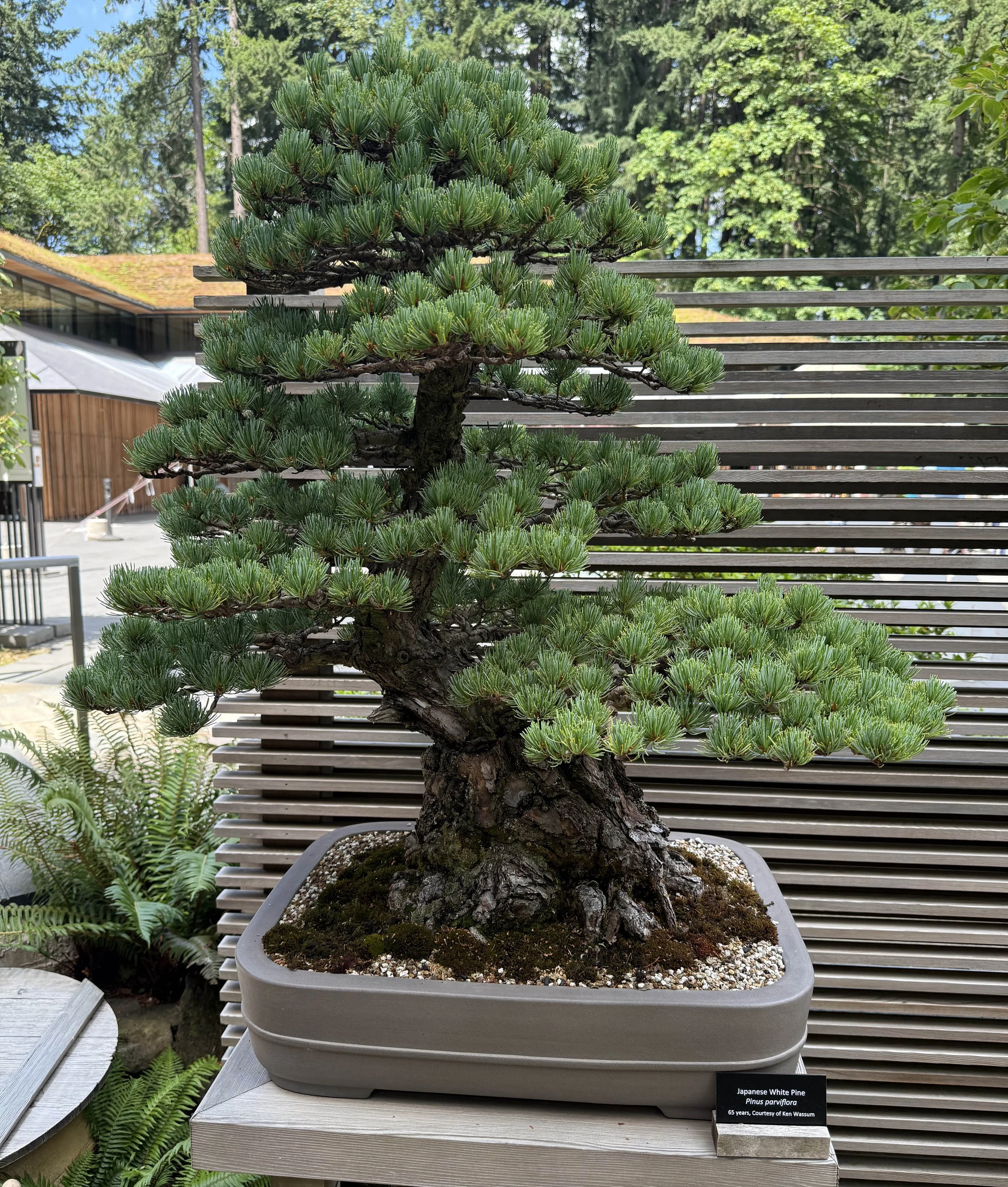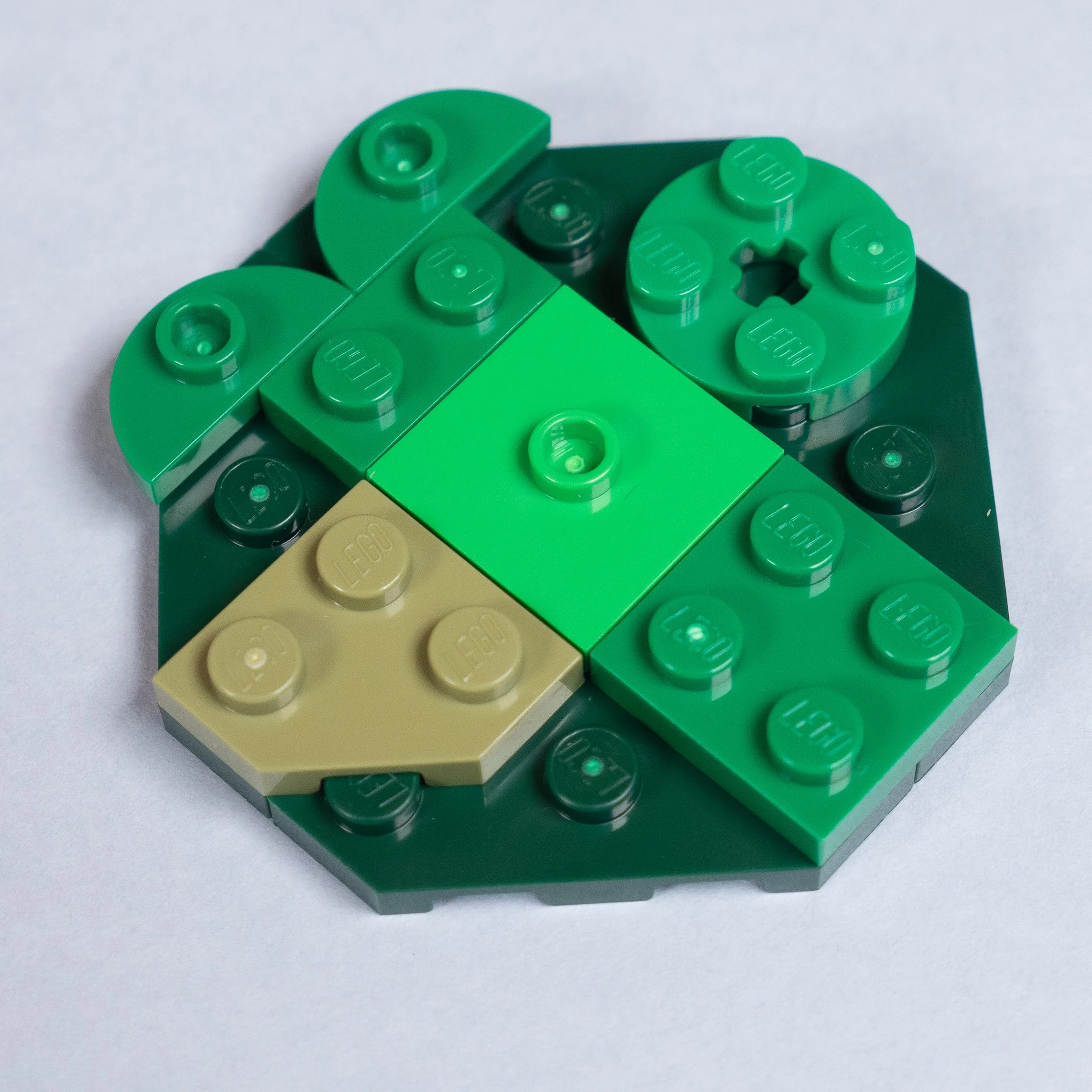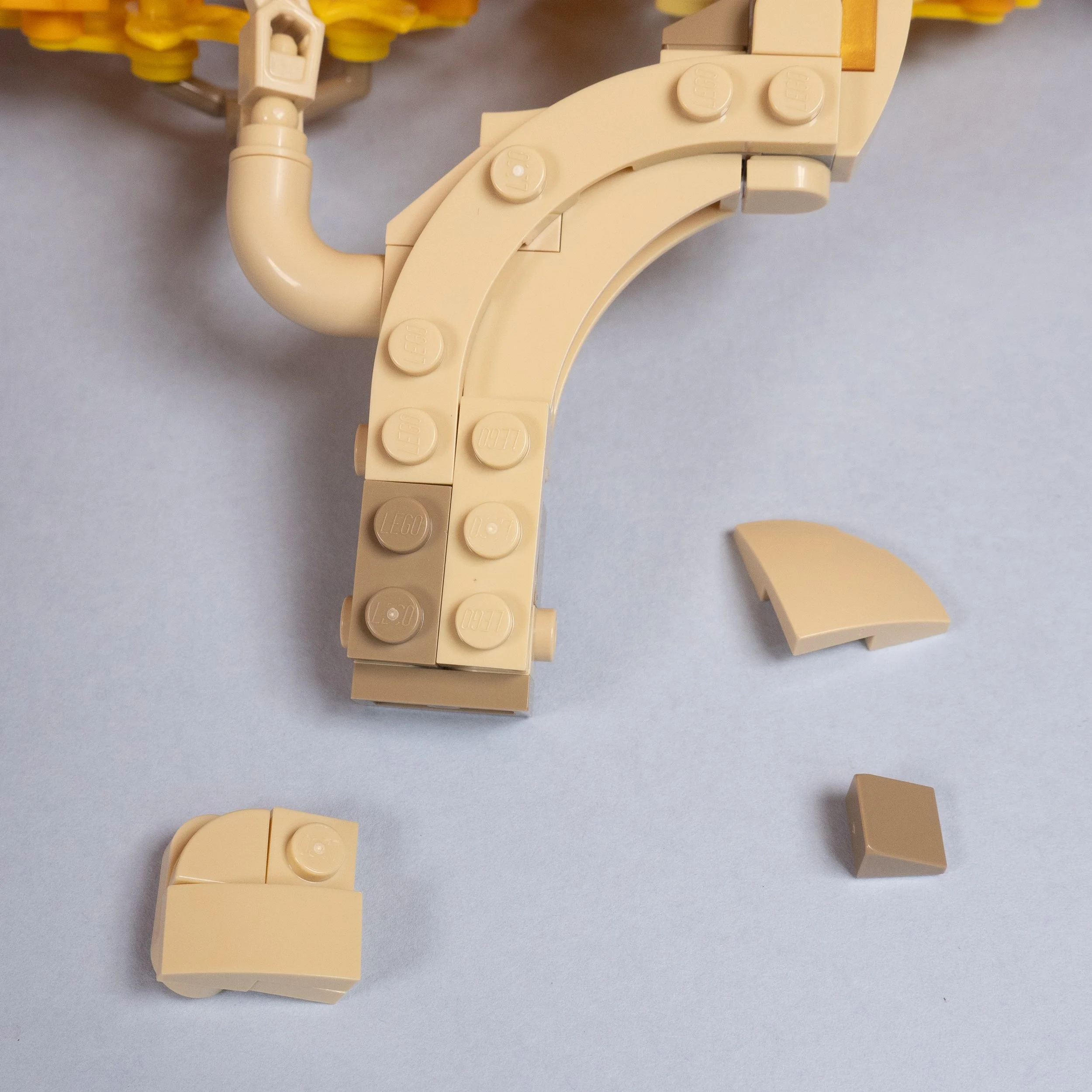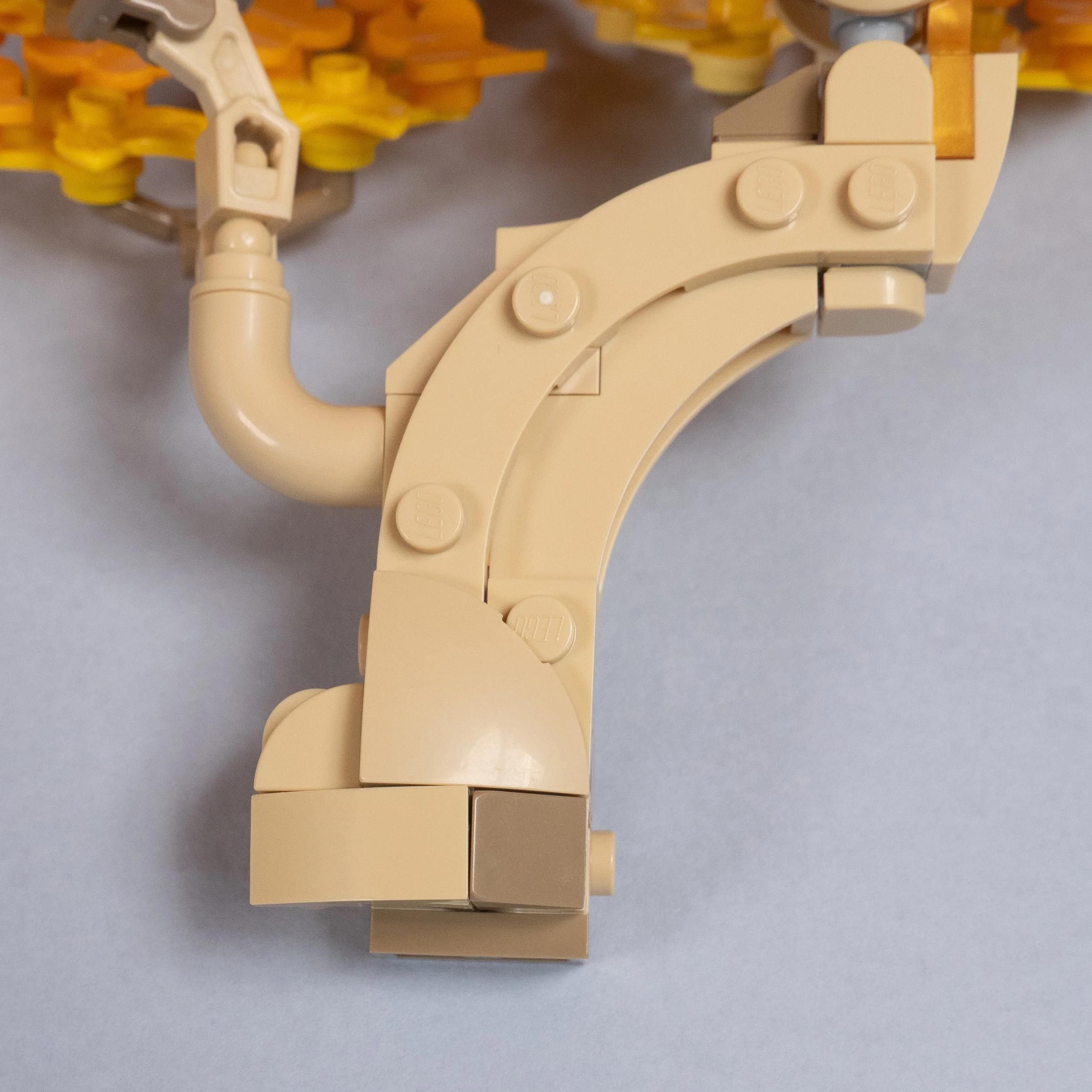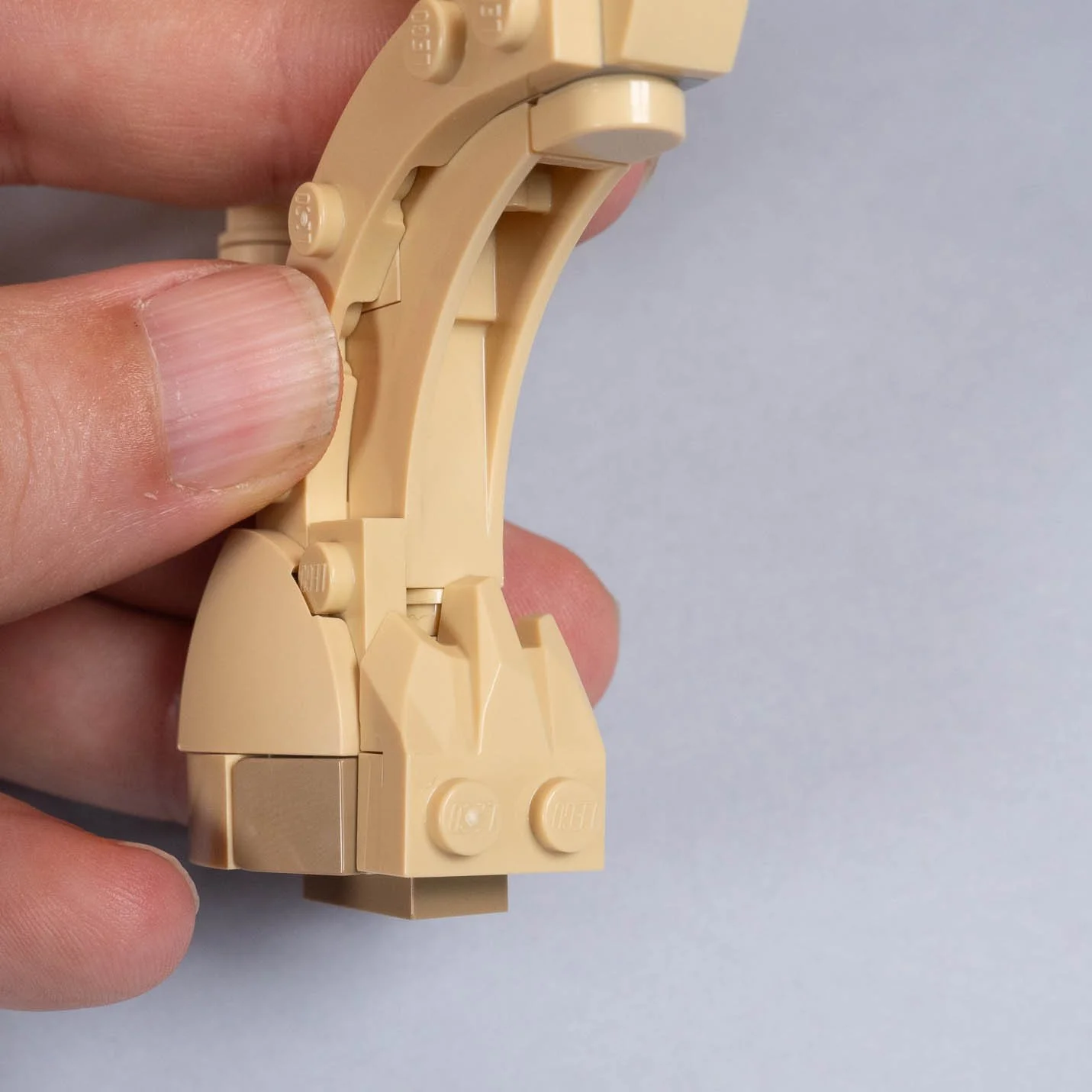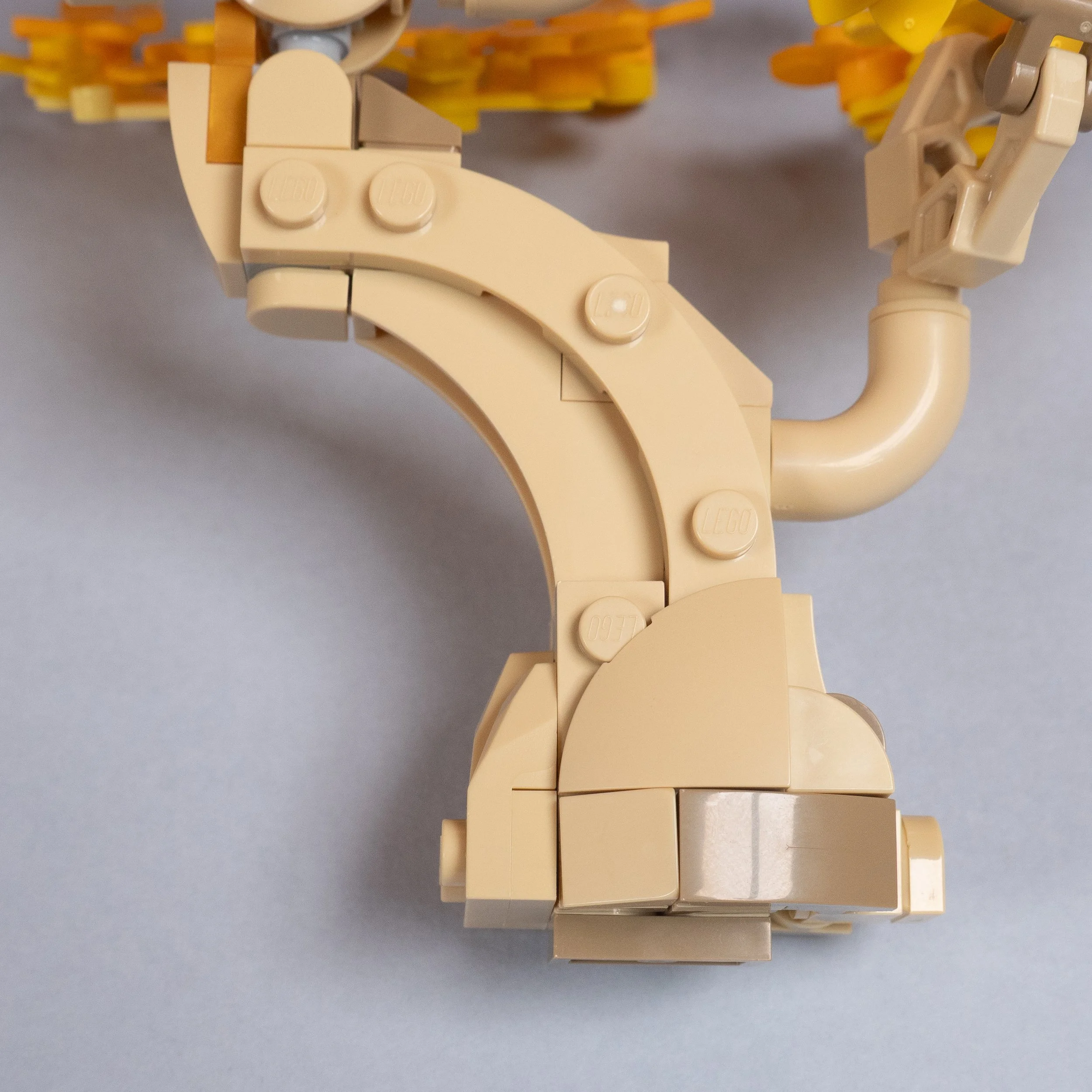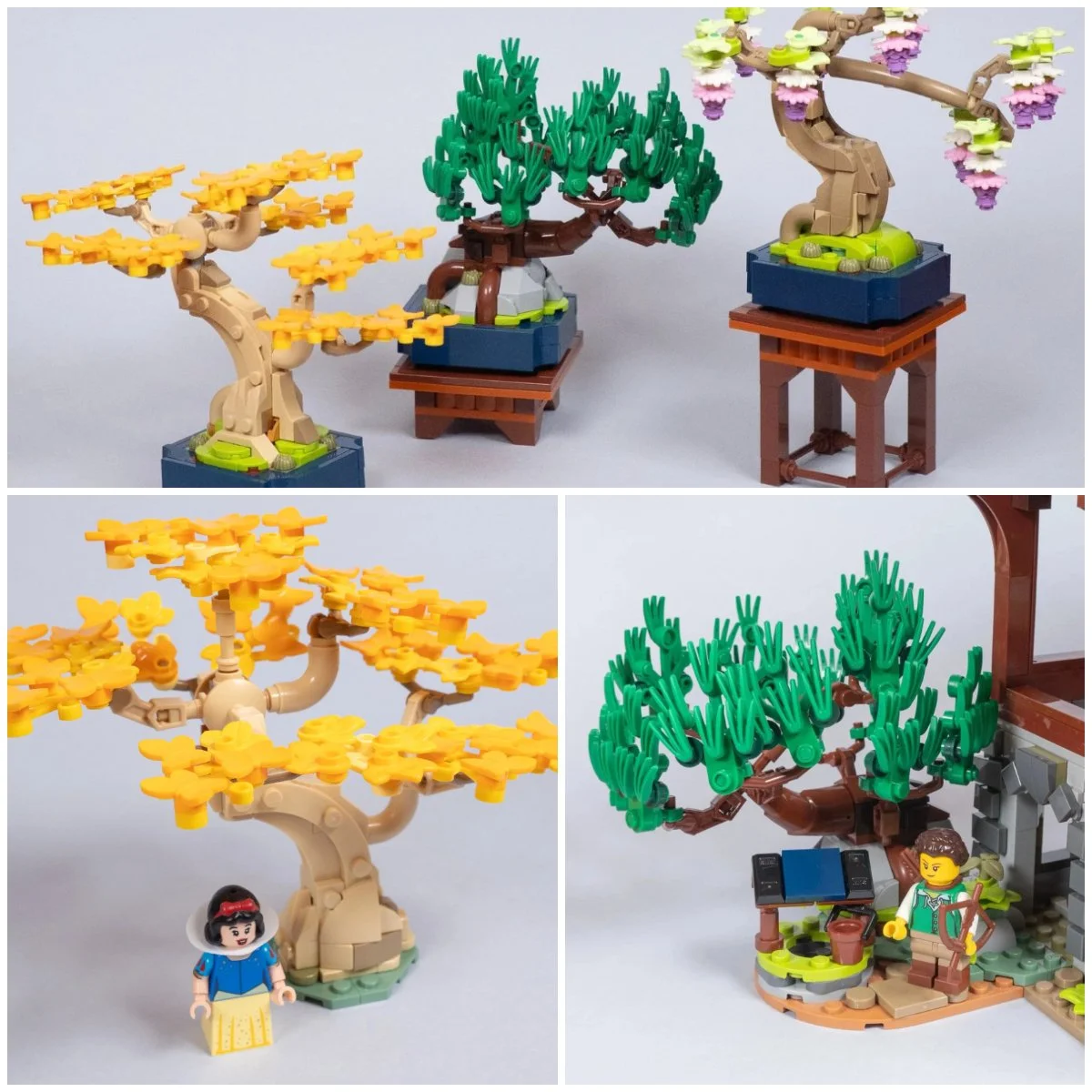A Botanical Battle Pack: Building Trees with the Hibiscus and Mini Bonsai Sets
/When LEGO announced the new Botanicals sets 10372 Hibiscus and 10373 Mini Bonsai Trees, my first thought wasn’t that they would be just “botanical display sets.” It was more like, “This is a minifigure-scale tree battle pack!”
Why do Star Wars fans get all the fun with their endless parade of “battle packs” to build armies with? As a fantasy and foliage builder, trees are my armies. And for those who need to populate a bunch of trees quickly in a MOC, set, or city, these new botanical sets appeared to bring the good stuff. So when I received this wave of botanicals from LEGO, I was eager to find out how well they’d work.
The truth is, trees have gotten short shrift in LEGO sets from the earliest days to today. A few rare examples have a reasonable amount of detail. And with the explosion of new foliage elements, trees have gotten incrementally better in sets. But most of the time they are disappointing when it comes to depth, detail, or bulk.
So how great would a botanical battle pack be with a set of modular tree trunks and foliage that LEGO fans can swap around for a variety of beautiful, character-filled trees? Swap out that sad tree in an official set without having to start from scratch! Fill your MOC with trees even when you don’t have the urge to craft one from nothing.
The 10373 Mini Bonsai Trees seemed like they would fit the bill quite nicely, and 10372 Hibiscus looks like it might be hiding a promising core tree structure (with new molds and new recolors that will be invaluable). Can we kit bash these beauties without too much work into a variety of trees that can be put right into a MOC or set? Let’s dig in, and see how these sets shape up, both on their own as sets and in their tree-building possibilities.
Mini Bonsai Trees (10373)
Before we start tearing these apart for MOCs, let’s first take a look at the set on its own. Up until now, LEGO has released several bonsai, starting with the exceptional 10281 Bonsai Tree that’s still around today after being released back in 2021. That’s a great run for any set, let alone a botanical. And it is still an exceptional set. 10373 Mini Bonsai Trees is also not the only bonsai tree released this year, with 10348 Japanese Red Maple Bonsai Tree also on store shelves, which looks to be another beautiful bonsai.
What’s different here is that we have three smaller bonsai in this set, following more of the approach of 10309 Succulents or 10329 Tiny Plants in that it offers a variety of smaller plants in their own separate pots. The trees are smaller, allowing you to arrange them together or separately, and in small spaces. And when completed, they are detailed and beautiful little bonsai, including little stands to tier their placement.
Personally, I’ve always loved trees, and perhaps even more so bonsai as a miniaturization of trees. I always try to check them out when there are some around, such as at the Portland Japanese Garden just recently, and they can be hundreds of years old (the examples below include a 300-year-old Mountain Hemlock). I even dabble in some informal “bonsai” of my own, like Japanese maples and a scavenged oak tree that sprouted in our yard a few years back. I’ve been training them for more than a decade now.
One thing I notice is that LEGO bonsai trees have leaned heavily into a more windswept and semi-cascading style of bonsai that sweeps to one side and doesn’t have a notable vertical shape, including these mini bonsai trees. The Ginkgo is more vertical but still has a fairly horizontal canopy shape. But it’s probably because that is just a more interesting and distinctive shape for bonsai generally. And I’ll admit I prefer the more curvy and horizontal/cascading shapes myself.
The Japanese Black Pine with a very windswept form clinging to the rocks
The Wisteria
The mini bonsai trees in the set include the Ginkgo, Wisteria, and Japanese Black Pine. They all look great, with striking color, interesting shaping, and clever building. Some say the lime color choice isn’t ideal, but it does add a pop of color and life to them. It’s meant to mimic vibrant moss that many professional bonsai masters employ to help with the illusion of a miniaturized natural scene. Could it be a little more muted? Maybe. But I do like the vibrancy of this choice, especially with how it creates contrast with the tans of the trunks.
Overall, it’s a great set with a beautiful outcome, although the typical good value of the LEGO Botanicals line appears to be waning. 10373 Mini Bonsai Trees comes with 709 pieces and a price tag of $65. Yet, it’s a lot of very small detail pieces.
Where it does keep up with the reputation of Botanical sets is the recolors. There’s a wealth of great pieces in tans that I will be gobbling up! Plus a ton of foliage pieces in welcome recolors (like finally a yellow 4x3 limb element (#2423), as well as pink sunflowers (#6901), and spring yellowish green leaves we all know and love) or parts in a good quantity (like the ingenious use of butterflies, and the return of green wolverine claws). Plus, there are those little round hair tuft pieces (#68212) now in olive green, which will be very interesting for landscaping detail.
The butterflies for ginkgo leaves were a subtle detail I didn’t realize at first. The butterfly wing shape somewhat mimics the unique shape of ginkgo leaves. I would say they are brilliant just as regular leaves, adding variation and a smaller leaf shape in combination with the more traditional leaf piece.
The Ginkgo
The one nitpicky downside of the mini bonsai trees’ design is that they are best viewed from the side. Despite being small, they do not fare as well when viewed from above. Especially the pine, which has a considerable bare area when viewed from a high angle. The ring of needles does not fill in the center space. The Ginkgo also has this problem to a lesser degree, and it has some awkward-looking gaps when looking closely at the branches. Additionally, the Wisteria’s long side branch seems disproportionately long.
Otherwise, this set of bonsai has an excellent design overall, especially considering the amount of detail packed into relatively small trees. And the foliage is designed to be modular, which is a bonus! Each tree has the same number of foliage bunches, and all attach to vertical bars. So they can easily be swapped and exchanged for even more combinations. And there are far more possibilities when you start making your own variations. This all just plays right into turning these bonsai into quickly implemented modular trees for MOCs and sets… once we get them out of their pots.
But first, let’s take a look at the Hibiscus, then we’ll get into leveraging the mini bonsai as a tree battle pack.
Hibiscus (10372)
10372 Hibiscus is a pretty build, but not my favorite of the LEGO Botanicals sets. It is big, bold, colorful, with interesting parts usage and wonderful recolors. We even get a great new mold that will be invaluable. But it’s also a little disjointed and clunky compared to others, and it’s only meant to be viewed from the front. It is shaped as a flat fan of branches with forward-facing flowers and an ugly back. So don’t plan on it being on a table like in this lifestyle shot from LEGO where it will be viewed from all sides.
After I built the set, I happened to be walking the trail near my house. Suddenly, I recognized this lavender flower growing on a bush at the side of the trail. I honestly always thought hibiscus were more of a tropical flower, not something to be found growing in Seattle. So I had to use Google to verify what I was looking at, and indeed it was a hibiscus (which apparently has a hardier version as well)!
The actual build was clever, with the flowers looking pretty accurate. Although like many of these types of flower builds, there’s a lot of repetition in this set that got tedious. There were some nice touches, like the tulips and eggs as little growths, and the lavender cones for the late-stage flower buds. And the pot was a great addition to the set, providing a sturdy, hefty base for keeping it upright and attractive looking.
There are also many helpful part recolors introduced in this set. The flowers contain the more flamboyant recolors, but the dark tan stem and branches provide the most useful ones. The new Technic angled triple connector piece (#7329) in tan is excellent and will be valuable for tree building to create a strong branching structure. The new 1x1 diameter, 45-degree macaroni (#7324) in tan is very welcome! It creates a much gentler curve that’s great for branches. Neither part is on LEGO’s online Pick-a-Brick service yet, but both already have various other colors from other sets being released.
Pretty Front
Unsightly Back
At the core, the main trunk uses the recolored “Support Half Round 2 x 4 x 13” (#1749) for a sturdy, tall trunk to build off of. I found that particularly interesting when I first saw the pictures.
Interesting solution, but lots of technic holes
It seemed like a great base for building trees, especially in quantity. I didn’t even realize it wasn’t actually the first time they recolored this piece for a tree trunk. It was previously introduced in reddish brown in 71424 Donkey Kong’s Tree House Expansion Set.
The challenge with this piece is the overabundance of Technic holes and the transition from the top to secure a canopy. The Technic holes seemed great as they allowed the side branches halfway up. In practice, though, there are just too many holes that need to be plugged. The Technic holes (top, bottom, and middle) are also all in the same flat plane, making it hard to create a more rounded tree shape with the branches.
The most challenging issue is that the top is just a 4-stud round surface. It wouldn’t be a very strong connection for a tree canopy. The clunky solution used in the set to attach the upper branches seems very sturdy, but doesn’t look great. It could be hidden by foliage and still work using this framework as a base. Sadly, this piece is not the shining gem I thought it might be.
An interesting potential for a tree structure with the flowers and foliage off, but it is very 2-dimensional and has some very inelegant connections to keep this thing sturdy.
Unlike most LEGO Botanicals, 10372 Hibiscus is not one I feel inclined to keep on display as-is. While it introduces a few useful parts, the model itself feels clunky, with design drawbacks that are hard to overlook—chief among them the fact that it only looks good from one side. For a botanical set that’s supposed to be enjoyed as a three-dimensional decorative piece, having an “ugly back” that really needs to be hidden against a wall is disappointing, especially when compared to more compelling builds like 10368 Chrysanthemum, 10369 Plum Blossom, or even 10313 Wildflower Bouquet. I wouldn’t call it an outright bad set, but for me, it’s one to part out rather than preserve, especially when other recent releases in the LEGO Botanical Collection are so much stronger.
However, all is not lost. The set still abounds with great tan parts that are incredibly valuable for tree-building. So for potential as part of the botanical battle pack for trees, it is not perfect but it could be filled out with foliage and would be very sturdy. If nothing else, it’s a great set of parts and introduces a great mold that I’m looking forward to coming out in other colors in the future.
Turning the Mini Bonsai into a Tree Battle Pack
Now, let’s get to reworking these gorgeous Mini Bonsai Trees into functional minifig-scale trees you can use anywhere. The first step is to get them out of their pots and figure out some new bases. When you start to dig into these, the two more upright trees are actually mounted in an unusual and clever way, using clips to secure them to the base. The base includes some of the root structure as well. While clever and sturdy, it also complicates using these trees on their own or anywhere else.
We’ll start simple. Let’s rebuild these bases on a more cohesive base that can then be mounted into any landscape. Once out of the pots, the base is rectangular and choppy, with reddish brown and olive green rectangular plates (and the olive green parts aren’t always attached to the reddish brown plate either).
I started with some lime green plates with curved edges for a nicer and more natural look when mounted in a landscape, and a seamless transition with the existing lime green “grass.” If using this combination of plates, this particular orientation is important so that it becomes one solid, connected build when everything is transferred over.
The final result looks great. These trees can now literally be put right on the plates or baseplates of a MOC, set or city.
How about going with a little more natural-looking set of greens? Easy peasy. For a regular green base, start with these “Plate 3x3, 1/4 Circle” (#30357), which makes it easier to have a well-connected base than the lime version.
You can rebuild the same exact structure on top, but just change up the coloring. For me, I ended up changing up some of the parts to fit what I had on hand and what seemed like a natural choice for the landscape.
The end result is a more natural-looking green base. It is still somewhat vibrant and rich compared to an olive or sand green, but it’s still more likely a landscape color people are using rather than lime green. The organic curves mean you could literally place this right on the landscape as is, and it would still look good. Or you can forgo the bottom plates and build like this right on your existing landscape.
Next, let’s try making it more compact with a set of angled plates. Same approach, just a little smaller base. I had to rework some of the details to fit the reduced number of studs available, but the main thing is to keep the essential components for the roots and mounting the trunk. This angled plate is available in multiple greens (#2450) so it would work well for a variety of colors.
This is about as compact as we can get while still retaining the essential elements of the existing base of the tree. But it does the job well as a base, and you can use any colors you like, and substitute parts
Pining for Pine Trees
The most challenging tree is the pine. It’s not forgiving when it comes to restructuring it. It’s not tall at all. In fact, it has almost no vertical trunk, and most of the verticality is from the large stone mound it’s growing on.
But taking it out of the pot does allow us to still use it on its own as a rugged mountain pine struggling and weather-battered. You could even replace some of the lime green plates and those bottom plates with different colors that better match your landscape. There’s just no easy way to make this more upright without heavy modding.
For example, 21325 Medieval Blacksmith was a great set. And while the set designer tried to make a substantive tree and used some clever techniques, it was ultimately not great and a little all over the place. Let’s take a look at how these trees could replace it with something more detailed and natural-looking.
Using this pine pretty much as is, it can integrate pretty well right into the scene. (I did move the rocky base of the original tree to give these trees space to be mounted.)
The original Blacksmith tree
Changed to a pine tree
Next, I took the Wisteria tree and swapped the drooping branch with the top branch on the 90-degree macaroni piece. Now we have a much more vertical tree structure. By swapping the pine bunches to replace the floral bunches, we have an interesting new look.
Going Ginkgo
Next I concentrated on the Ginkgo, going for a fall effect. I added another vertical branch on top to give it more height without too much work. And suddenly, we have another potential option in place.
The Ginkgo tree was an interesting upright structure to start with, so I wondered what it would take to go from the complicated base structure to a more direct stud connection that can go almost anywhere—and add a little height to the trunk in the process.
Here are all the steps I took if you want to replicate it yourself. I started by removing the lower portion of the trunk and rebuilding it in a similar fashion, but with a slightly different approach. I wanted to keep these large curved tan plates, though.
Next, you can build out the new lower trunk and put the large curved plates in place (which also add good stability to the tree structure). We will start by replacing the bottom core with a bottom 1x2 plate that will mount directly on the ground.
Then start filling in the sides and re-integrating the large curved plates.
Now make some changes to the next side with a little bit of flaring trunk below the curve.
Then all that remains is to flip it over and do the same thing on the other two sides.
In the end, we have a two-stud connection at the bottom without clips. Just remember that the outward building of the trunk requires some tile surfaces at the base, so here’s an example using some plates to create a standalone base for the tree in sand green. You can use a similar pattern of tiles on any surface to attach this tree simply and easily to the remaining two studs in the middle.
The Best LEGO Tree Battle Pack
This whole article is a taste of some simple changes you can make to take advantage of this botanical battle pack for trees right now. But you can easily create variations to populate entire forests if you want. Change up the foliage. Change up the branch placement. Change up the base, colors, or even the trunk and how it mounts. Here are a few other possibilities as inspiration.
There’s a lot of potential with 10372 Hibiscus and even more with 10373 Mini Bonsai Trees to build character-filled trees you can add to any landscape. They are compact, sturdy, and detailed.
But what do you think—does this set live up to being a LEGO tree battle pack?
LEGO Botanicals 10372 Hibiscus and 10373 Mini Bonsai Trees are available now for around $70 each in the US, EU, CA, UK, and AU.
DISCLAIMER: These sets were provided to BrickNerd by LEGO. Any opinions expressed in this article are those of the author.
What else can you imagine doing with this modular tree system? Let us know in the comments below.
Do you want to help BrickNerd continue publishing articles like this one? Become a top patron like Marc & Liz Puleo, Paige Mueller, Rob Klingberg from Brickstuff, John & Joshua Hanlon from Beyond the Brick, Megan Lum, Andy Price, Lukas Kurth from StoneWars, Wayne Tyler, Dan Church, and Roxanne Baxter to show your support, get early access, exclusive swag and more.








